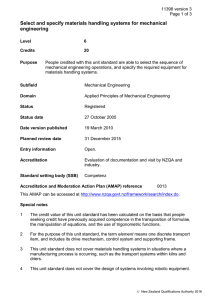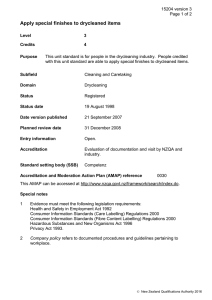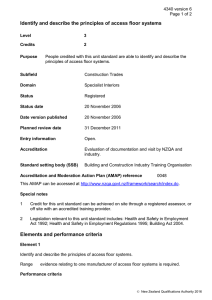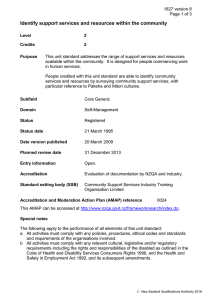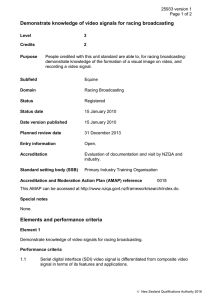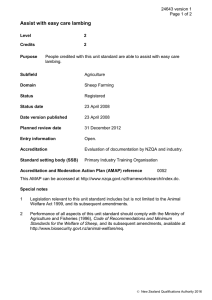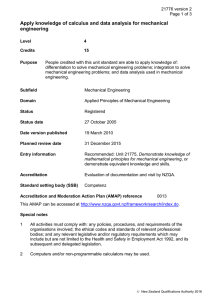Demonstrate knowledge of carpentry hand tools
advertisement
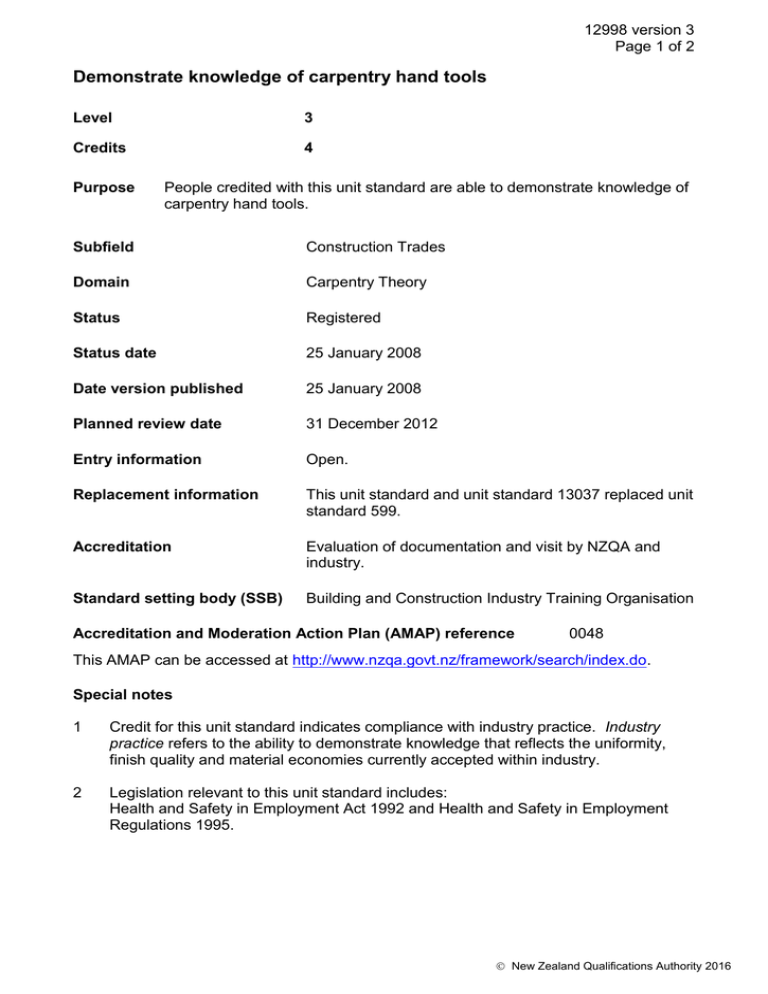
12998 version 3 Page 1 of 2 Demonstrate knowledge of carpentry hand tools Level 3 Credits 4 Purpose People credited with this unit standard are able to demonstrate knowledge of carpentry hand tools. Subfield Construction Trades Domain Carpentry Theory Status Registered Status date 25 January 2008 Date version published 25 January 2008 Planned review date 31 December 2012 Entry information Open. Replacement information This unit standard and unit standard 13037 replaced unit standard 599. Accreditation Evaluation of documentation and visit by NZQA and industry. Standard setting body (SSB) Building and Construction Industry Training Organisation Accreditation and Moderation Action Plan (AMAP) reference 0048 This AMAP can be accessed at http://www.nzqa.govt.nz/framework/search/index.do. Special notes 1 Credit for this unit standard indicates compliance with industry practice. Industry practice refers to the ability to demonstrate knowledge that reflects the uniformity, finish quality and material economies currently accepted within industry. 2 Legislation relevant to this unit standard includes: Health and Safety in Employment Act 1992 and Health and Safety in Employment Regulations 1995. New Zealand Qualifications Authority 2016 12998 version 3 Page 2 of 2 Elements and performance criteria Element 1 Demonstrate knowledge of carpentry hand tools. Range apron, folding rule, measuring tapes, carpenter’s pencil, claw hammer, nail punch set, combination square, steel square, wall board saw, coping saw, sliding bevel, chisels, planes, screwdrivers, spirit level, pinch bar (wrecking bar), plumb bob, end cutting nippers, adjustable spanner, pliers, tinsnips, hacksaw and blades, chalk line, string line, marking gauge, butt gauge, chalk line, string line, sanding block, cutting knife, cramps and clamps, straight edge, pop riveter, panel saw, cross cut saw, rip saw, combination saw, socket set, dividers, drill bits, oilstone, hand drill, brace and bits. Performance criteria 1.1 Use of tools is described in terms of the work operations to be completed. 1.2 Care and maintenance of tools are described in accordance with manufacturer’s recommendations. Range 1.3 any cutting edges, required maintenance. Use of tools is described in terms of safety requirements. Range work methods, plant, equipment, identification of hazards and controls. Please note Providers must be accredited by NZQA, or an inter-institutional body with delegated authority for quality assurance, before they can report credits from assessment against unit standards or deliver courses of study leading to that assessment. Industry Training Organisations must be accredited by NZQA before they can register credits from assessment against unit standards. Accredited providers and Industry Training Organisations assessing against unit standards must engage with the moderation system that applies to those standards. Accreditation requirements and an outline of the moderation system that applies to this standard are outlined in the Accreditation and Moderation Action Plan (AMAP). The AMAP also includes useful information about special requirements for organisations wishing to develop education and training programmes, such as minimum qualifications for tutors and assessors, and special resource requirements. Comments on this unit standard Please contact the Building and Construction Industry Training Organisation national.office@bcito.org.nz if you wish to suggest changes to the content of this unit standard. New Zealand Qualifications Authority 2016




